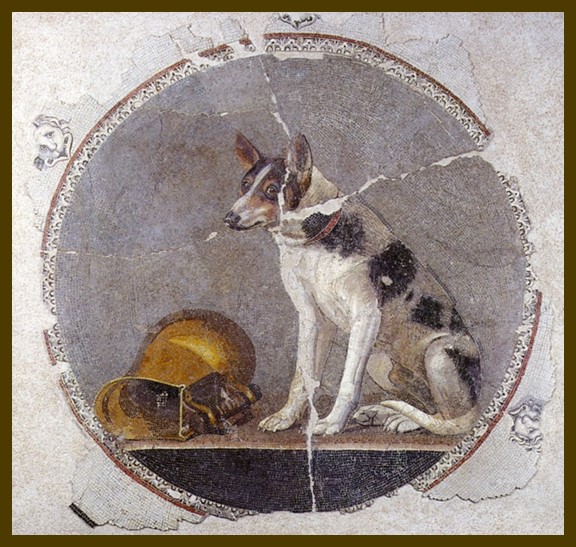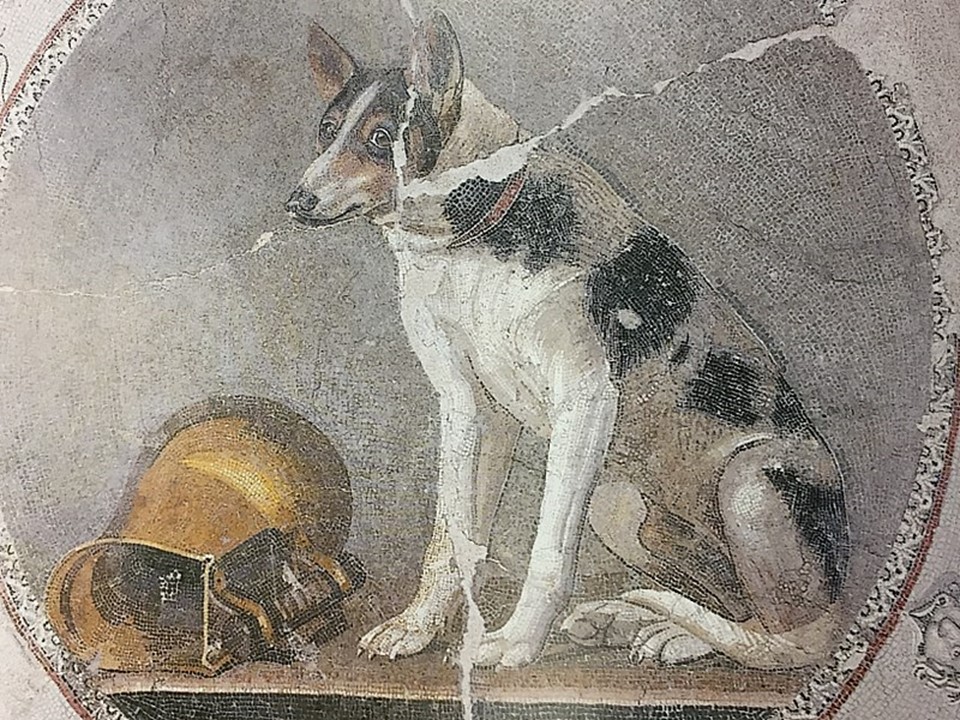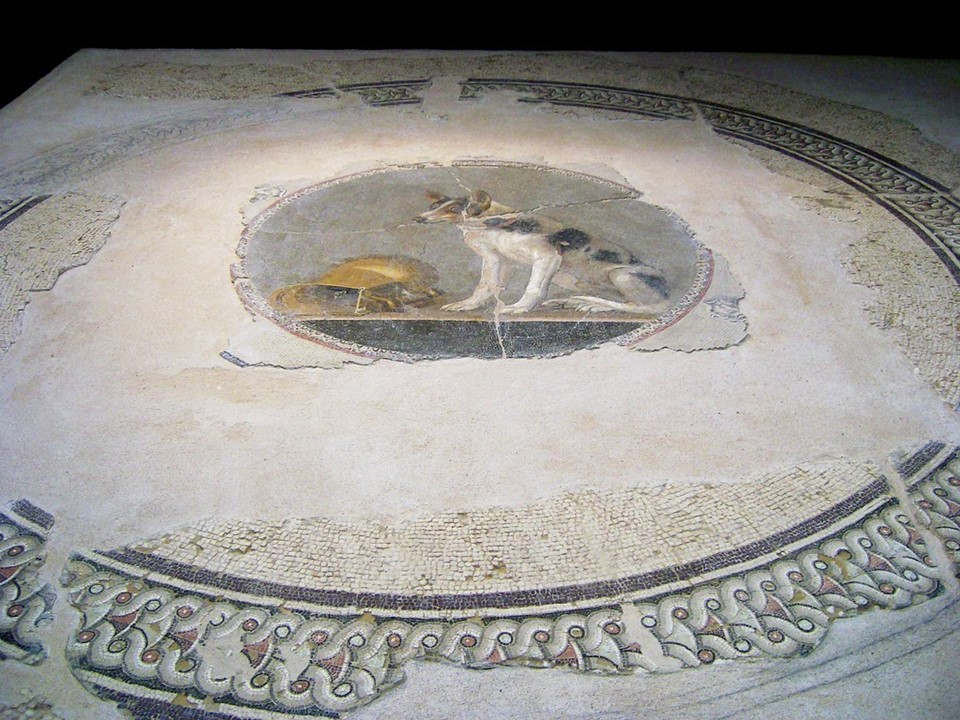
There was once a Dog, according to Aesop, who was so ill-natured and mischievous that his Master had to fasten a heavy wooden clog about his neck to keep him from annoying visitors and neighbours. But the Dog seemed to be very proud of the clog and dragged it about noisily as if he wished to attract everybody’s attention. He was not able to impress anyone. You would be wiser, said an old acquaintance, to keep quietly out of sight with that clog. Do you want everybody to know what a disgraceful and ill-natured Dog you are? This is definitely not the case for the Alexandrian Mischievous Dog depicted in the most adorable Mosaic! https://www.youtube.com/watch?v=gQDRKs8tfag and https://fablesofaesop.com/the-mischievous-dog.html
If you are a dog lover this Alexandrian Mosaic will become your favourite! It is about a kind but mischievous dog, that looks at you with big, guilty eyes because he has just dropped a pitcher down and spilt perfectly good wine… The Alexandrian Mosaic of this mischievous but remorseful Dog makes your heart leap and your hands open up for a big embrace!

This wonderful 2nd century BC composition once decorated a floor in the royal quarter of Alexandria in Egypt. It is an astounding floor mosaic executed using the tiniest cubes in the Opus Vermiculatum (“worm-like work”) technique. Developed in Greece during the Hellenistic period, the “Opus Vermiculatum is a method of laying mosaic tesserae to emphasise an outline around a subject.” This mosaic method allowed very fine details, imitating the illusionistic approach of Hellenistic painting. “It was generally used for emblēmata, or central figural panels, which were surrounded by geometrical or floral designs in opus tessellatum, a coarser mosaic technique with larger tesserae; occasionally opus vermiculatum was used only for faces and other details in an opus tessellatum mosaic.” https://en.wikipedia.org/wiki/Opus_vermiculatum and https://www.britannica.com/art/opus-vermiculatum

We will never know if the Mischievous Dog Mosaic depicts a scene from a popular Hellenistic literary work performed in Alexandria. The mosaic itself gives no clues. The mosaicist created a circular composition, stark and minimal, with the Dog mosaic as a precious emblēma in its center. Quoting the Library of Alexandria Museum site where the mosaic is exhibited “the mosaic illustrates a dog sitting next to an inverted Greek vase. The details of the scene highlight the artist’s ability to make a realistic portrait of the dog so as to express the strength and vitality of the animal. Thus, the dog’s coat, spotted with black, is finely depicted, as well as the red collar that surrounds its neck. The central stage includes several colours, including black, white and yellow. The artist was able to accentuate the shadow-light contrasts by representing the dog from the angle of 3/4; the front part reflects the light while the rest of the body is in the shade. The same is true for the bronze vase, the gradation of its colours shows the reflection of light on the central part, while the sides are more and more shaded. The artist, using these rigid and inanimate materials, has indeed managed to give depth to the scene presented. This piece testifies to the virtuosity of the mosaic design workshops in Alexandria.” http://antiquities.bibalex.org/Collection/Detail.aspx?lang=fr&a=859
For a Student Activity, please…Check HERE!
